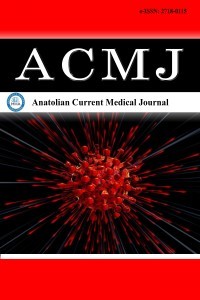
Anatolian Current Medical Journal
Yazarlar: ["Serkan KETENCİLER", "Hüseyin GEMALMAZ", "Yıldırım GÜLTEKİN"]
Konular:-
DOI:10.38053/acmj.1140522
Anahtar Kelimeler:Coronary artery by-pass graft,Carotid artery stenosis,Near infrared spectroscopy
Özet: Aim: Central nervous system may be affected after coronary artery by-pass graft (CABG) and carotid artery stenosis is an important risk factor. Near infrared spectroscopy (NIRS) is used to measure the regional cerebral oxygen concentration (rScO2). The aim of this study is to determine the relationship of rScO2 in patients with carotid artery lesion and to determine the relation of stroke with rScO2 changes. Material and Method: The patients who had cardiac bypass surgery were involved in the study. Demographic characteristics and presence of carotid artery stenosis, were collected from the files. Bilateral rSO2 measurements performed by 2 sensors. RScO2 values are detected in 5 minutes of cross-clamp (XCL5), XCL30, XCL60, XCL90, XCL120 and after the by-pass. Results: 57 patients were involved in the study (40 male and mean age 62.54±13.08). 17 (29%) patients had carotid stenosis. rScO2 levels are statistically significantly decreased in the patients with stenosis after post-clamp 30 minutes. Three patients had stroke after surgery (5.2%). Two of the patients had carotid stenosis while one patient did not have. Conclusion: RScO2 decreased in carotid artery stenosis irrespective of the degree of the stenosis after 30 minutes of cross-clamp. Cerebral perfusion follow-up is important during the CPB and NIRS is a method that can be used for this purpose.